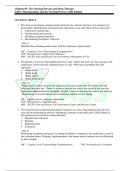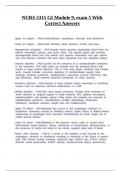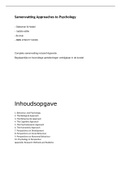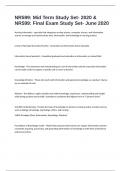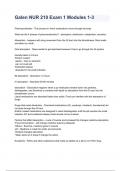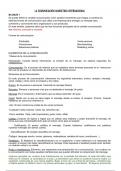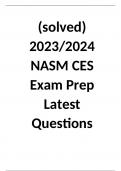Tutorial Groups
Why affect? Functional Approach
• Criticism on traditional attitude – behavior models:
o Large emphasis on cognition and rationality (see week 2)
o Moods (less intense, long-lasting, & either +/-) and Emotions (shortlived,
immediate & range of specific emo’s) are largely ignored
• But... they are functional
o Functional emotion theories (Darwin). Emotions...
§ have adaptive functions
§ arise in response to events that are personally relevant
§ motivate us to take action
When can affect influence persuasion? Emotions and Persuasion
Several ideas when affect can arise and influence persuasion effects:
• Within the receiver, prior to message reception (e.g., you just heard you passed the
exam, and are happy right before processing a persuasive message)
• Through prior contextual information (e.g., funny TV-show, sad movie etc.)
• Through a persuasive message itself (focus of this week!) (e.g., Fear-appeal, humor-
appeal, guilt-appeal etc.)
These effects may not be limited to fear...
• Range of negative emotions
• Positive emotions are not very common (yet) in health communication (theory)
Other emotions:
• Guilt
• Disgust
• Sadness
• Hope
• Pride
• Calmness
Feelings in health promotion messages: Fear
A message that has the goal to arouse fear in order to motivate attitude and behavior
change.
General fear appeal process:
,History of fear appeal models
• Fear-as-acquired drive models
o Drive = motivator
o Facilitating effect of fear:
§ Fear à
§ Negative “condition” à
§ Motivational drive to change the condition.
o But also an interfering effect of fear:
§ Too much fear à
§ Too negative “condition” à
§ Avoidance effects
• Parallel response model
o Fear can lead to two parallel processes and
responses:
§ ‘danger control’: Cognitive response
• how to avoid the threat?
§ ‘fear control’: Affective response
• how to reduce feelings of fear?
o Difference PRM - EPPM:
§ PRM has no role for efficacy yet.
§ PRM does not include a stepwise appraisal.
• Protection motivation theory
o Based on (cognitive) subjective expected utility
§ What (utility) will I (subjective) get when (not) performing (expected)
o So, mainly focus on ‘danger control’ (which is cognitive)
o PMT has only a small role for emotion!
• Health belief model
,• Shortcomings of these earlier models:
o Each of the prior models only explains a part of how fear-appeals work
o Unclear when / why fear appeals don’t work
o Witte integrates (most of) these older models: à Extended Parallel Process
Model
• Extended parallel response model
, A Meta-Analysis of Fear Appeals: Implications for Effective Public
Health Campaigns (Witte & Allen, 2000)
ABSTRACT
The meta-analysis suggests that strong fear appeals produce high levels of perceived
severity and susceptibility, and are more persuasive than low or weak fear appeals. The
results also indicate that fear appeals motivate adaptive danger control actions such as
message acceptance and maladaptive fear control actions such as defensive avoidance or
reactance. It appears that strong fear appeals and high-efficacy messages produce the
greatest behavior change, whereas strong fear appeals with low-efficacy messages produce
the greatest levels of defensive responses.
FEAR APPEAL THEORY: 1953 TO THE PRESENT
• Three key independent variables have been identified: fear, perceived threat, and
perceived efficacy.
• Fear is defined as a negatively valenced emotion, accompanied by a high level of
arousal.
• Perceived threat is composed of two dimensions: perceived susceptibility to the
threat (i.e., the degree to which one feels at risk for experiencing the threat) and
perceived severity of the threat (i.e., the magnitude of harm expected from the
threat).
• Perceived efficacy also is composed of two dimensions: perceived self-efficacy (i.e.,
one’s beliefs about his or her ability to perform the recommended response) and
perceived response efficacy (i.e., one’s beliefs about whether the recommended
response works in averting the threat).
• The outcomes studied in fear appeals appear to fall into two general classes: (1)
outcomes related to acceptance of the message’s recommendations (i.e., attitudes,
intentions, behaviors in line with the recommendations) and (2) outcomes related to
rejection of the message (i.e., defensive avoidance, reactance, denial).
• Overall, fear appeal theories can be classified into three major groups, according to
Dillard: drive theories, parallel response models, and subjective expected utility
(SEU) models.
• Witte’s extended parallel process model (EPPM), which integrates these three
previous perspectives into one theory.
Drive Theories
Drive theories (i.e., Hovland et al.’s fear-as-acquired drive model, Janis’s family of curves,
and McGuire’s nonmonotonic models) suggest that the level of fear arousal produced by a
fear appeal acts as a drive to motivate actions. However, it was argued that fear could have
both facilitating (e.g., motivate appropriate self-protective responses) and interfering (e.g.,
avoidance) effects. Overall, drive theories suggested an inverted U-shaped relationship
between fear and attitude change in which a moderate amount of fear arousal was thought
to produce the most attitude change.


